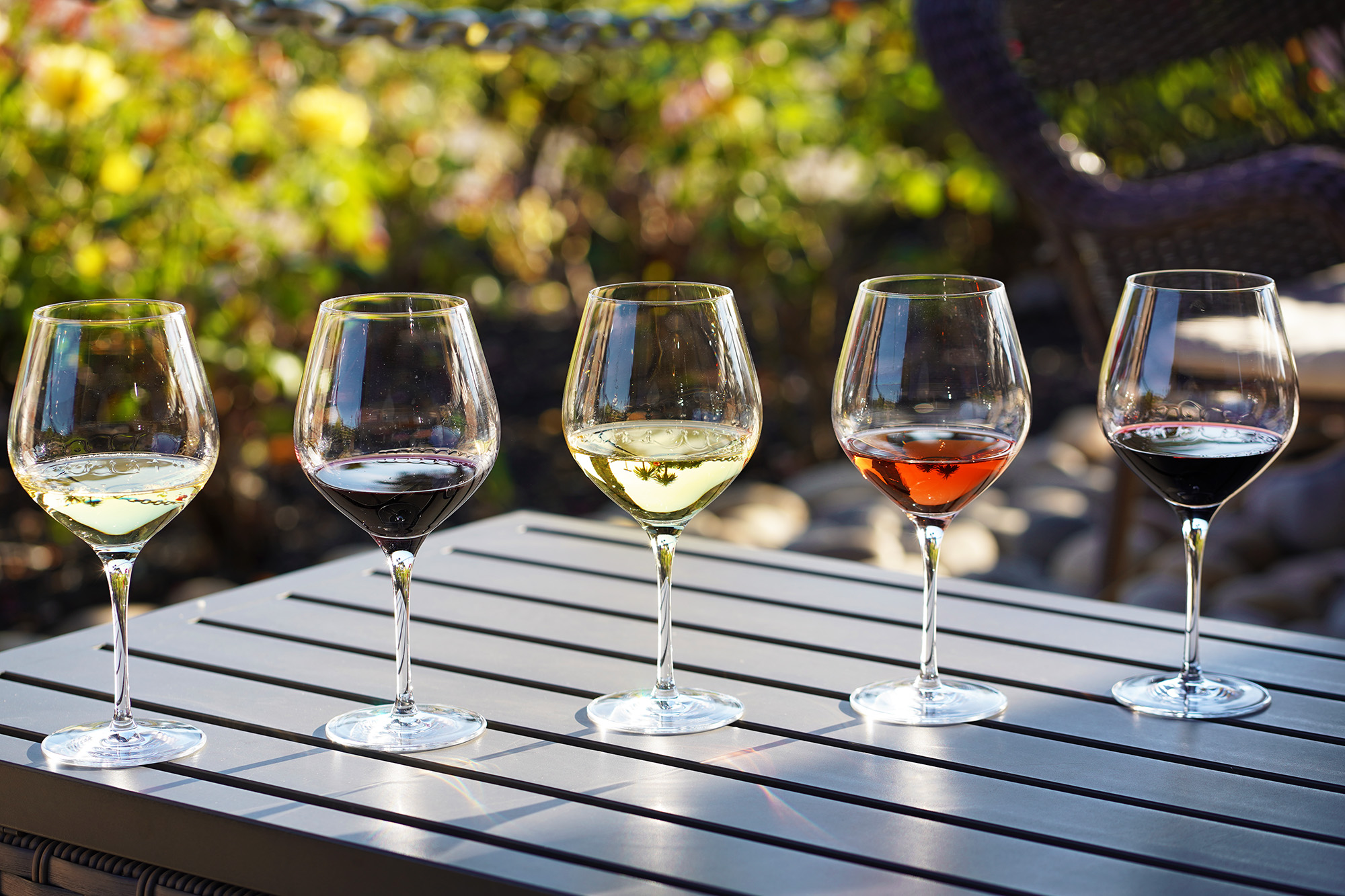Wine Acidity: A Fundamental Feature
 If you love exploring good wines like we do, your curiosity will lead you to all kinds of wine world vocabulary. In this blog, we’re exploring the essentials of wine acidity. What does “acidity” mean in wine tasting? Is acid in wine good or bad? How can you describe a wine’s acidity? We explore all this and more.
If you love exploring good wines like we do, your curiosity will lead you to all kinds of wine world vocabulary. In this blog, we’re exploring the essentials of wine acidity. What does “acidity” mean in wine tasting? Is acid in wine good or bad? How can you describe a wine’s acidity? We explore all this and more.
Acidity is Essential to Wine
There are four basic traits you can look for in every glass of wine: tannin, alcohol, sweetness, and acid. Of course, the levels and character of each of these elements will vary between varietals, vintages, winemakers, wine styles, terroir, and more. In general, you can expect red wines to be less acidic than white wines. Acidity is the main source of structure in a white wine, which is why it’s more associated with white wines. Red wines also have influential acidity, but their structure is generally dictated by the tannin quality. Light-bodied whites are generally more acidic than a more rounded white wine, and sweet white wines are the most acidic. A perfectly acidic wine will literally make your mouth water, sharpening the individual flavors, offering a delicious prickling sensation on the sides of the tongue, and a mouth-watering finish.
The Role of Acidity
Acid, in particular, is responsible for the tart, tangy, vibrant, or sour character within a wine. If it’s mouthwatering or makes you pucker a bit (good or bad) it’s probably the acidity at work. These fresh, tart and sour attributes of the wine are evaluated in relation to how well the acidity balances out the sweetness and bitter components of the wine such as tannins. Sweetness will temper the sensation of acidity--so two wines with the same level of acid won’t have the same sensation if one is sweeter than the other. Sweet wines generally have higher acidity because of this dynamic. Regardless of sweetness, however, a wine without acid ages poorly and tastes “flabby” and undefined. A wine that is very acidic but well balanced by its other elements is an absolute delight!
The Science of Wine Acidity
Depending on its acidity, the pH of wine ranges from 2.5 to about 4.5, making it less acidic than other common beverages like coke or lemonade. Tartaric and malic acid occur naturally in grapes, and as they ripen the sugar increases and the acid decreases. At harvest time, our winemaker makes picking decisions based on this balance. During the winemaking process, many wines will undergo malolactic fermentation (also called “the malo” or MLF), a secondary fermentation where malic acid is converted into the softer lactic acid creating the creamy or “buttery” profiles of wine. If you have ever compared a stainless steel Chardonnay (no MLF) to an oaked Chardonnay (MLF) you know that the type of acid in a wine has a significant impact on the flavor and profile of the wine.
Describing Wine Acidity
Other than simply “acidic,” a few words you may hear to describe acidity in a wine include tart, tangy, fresh, and sour. If you want to be more creative and describe the exact character of the acidity, words like puckering or mouthwatering describe the effect of the wine, while laser-sharp, crunchy, or crisp might encapsulate the effect on a wine’s structure. Feel free to borrow other acidic fruits to describe the individual notes, such as lemon zest, tangerine, or grapefruit in a white wine or cranberry and tart cherry in a red wine. Some words provide an overall description of how the wine feels, like racy, electric, zippy, zing, bright, or brisk, and these refer to the acidity as well.
Acidity and Wine Pairing
Outside of the characteristics of the wine itself, acidity also factors into a wine’s pairing potential. A wine with nice acidity will pair very nicely with delicious salty or higher-fat foods, perking up these heavier meals by working as palate cleansers and preparing you for each delectable bite. Additionally, a lower acid wine will taste dull and flat alongside acidic dishes, while a crisp, higher-acid wine will complement the meal beautifully. So, if you are having a dish that is zesty and zippy with acidity, you can choose a wine that matches. We recommend serving acid-driven wines at a lower temperature. Acid and chilling go hand in hand—it’s one thing that makes these wines so crisp and refreshing. Traditional Italian wines are well-known for their pairability, and it will come as no surprise that it’s due to their amazing acidity, so we recommend a zippy Sangiovese or a Barbera with tart cherry notes with dinner tonight!